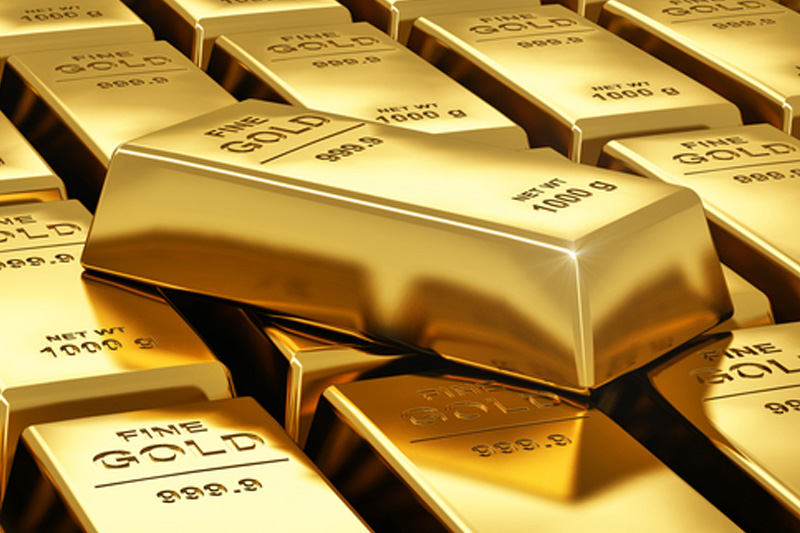By Barani Krishnan
Investing.com - Geopolitics: A term almost forgotten in the gold market over the past pandemic year made a dramatic comeback Thursday as sweeping U.S. sanctions on Russia triggered demand for the yellow metal from those seeking a hedge to the growing crisis between the two world powers.
Plunging U.S. bond yields also led to a ramp up in long positions of gold as market participants bet the precious metal would recover its footing as an inflation hedge amid the trillions of dollars in stimulus spending already underway or being planned by the Biden administration.
Benchmark gold futures on New York’s Comex settled up $30.50, or 1.8%, at $1,766.80 an ounce. It earlier scaled a seven-week high of $1,770.35, making its first return to $1,770 pricing since Feb. 26.
The spot price of gold wasn’t far from futures, trading up $30.20, or 1.7%, at $1,766.58 by 1:56 PM ET (17:56 GMT), after a peak at $1,769.64. Moves in spot gold are integral to fund managers, who sometimes rely more on it than futures for direction.
“I had people calling to buy gold for two reasons today: The first is the sanctions and the other was the plunge in bond yields,” said Phillip Streible, market strategist for precious metals at Chicago’s Blue Line Futures.
The Biden administration targeted Russia with sweeping sanctions and diplomatic expulsions Thursday, punishing Moscow for its interference in the 2020 U.S. election, its SolarWinds cyberattack and its ongoing occupation and "severe human rights abuses" in Crimea.
The announcement is one of a series of dramatic foreign policy steps that President Joe Biden has taken this week. Along with his decision to withdraw all troops from Afghanistan and send an unofficial delegation to Taiwan to express support for its democracy and security, the president has signaled what may be a turn toward a tougher, more pragmatic global posture for the U.S.
Prior to Thursday, the last time gold prices reacted to a geopolitical situation was during the January 2020 assassination of Qasem Soleimani, Iran’s top general, who was killed in a U.S. strike ordered by Biden’s predecessor Donald Trump.
The breakout of the Covid-19 after the Soleimani assassination whittled down international conflicts to almost zero for the rest of 2020, until the November killing of nuclear scientist Mohsen Fakhrizadeh — again, an Iranian — in a hit linked to Israeli forces. That incident barely made a ripple on the gold market.
Since Biden came to office in January, new U.S.-Russia rumblings have begun and tensions have escalated in the Middle East involving Iranian, Saudi, Turkish and Israeli actors. None had made a material impact on gold until these White House sanctions on Moscow.
U.S. bond yields, measured by the 10-year Treasury note, plunged to 1.54% from a 14-month high of 1.77% on March 30. That reasserted gold’s position as an inflation hedge, some traders said.
A stronger dollar on Thursday did not weigh on gold, as it typically would. The Dollar Index, which pits the greenback against the euro and five other major currencies, hovered at 91.70 versus Tuesday’s at 91.67.
Gold had a scorching run in mid-2020 when it rose from March lows of under $1,500 to reach record highs of nearly $2,100 by August, responding to inflationary concerns sparked by the first U.S. fiscal relief of $3 trillion approved for the coronavirus pandemic.
Breakthroughs in vaccine development since November, along with optimism of economic recovery, however, forced gold to close 2020 trading at just below $1,900.
Since the start of this year, gold has had more headwinds as the dollar and bond yields often surged on the argument that U.S. economic recovery from the pandemic could exceed expectations, leading to fears of spiraling inflation as the Federal Reserve kept interest rates at near zero.
Gold’s weakness of late was even more remarkable if considered from the perspective of the additional Covid-19 relief of $1.9 trillion passed by Congress in March, and the Biden administration’s plan next for an infrastructure spending bill of $2.2 trillion.
The dollar debasement from these stimulus measures should have sent gold rallying as an inflation hedge. But the opposite has often happened.
